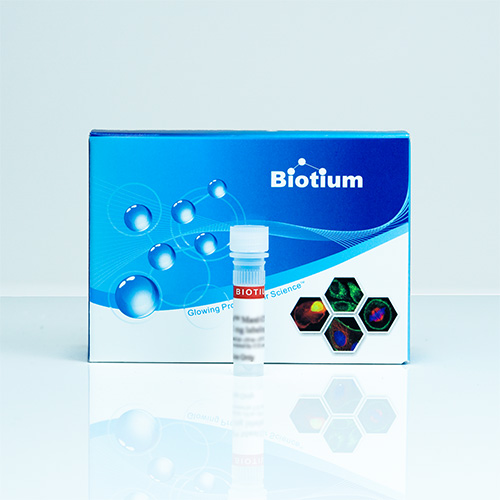Methotrexate Conjugates
Cytotoxic agent that binds and inhibits dihydrofolate reductase. Useful for studying antimetabolite resistance, spontaneous gene amplification, and drug binding. Available conjugated to fluorescein and CF® Dyes.
Wishlist updated! View wishlist
Product Description
Methotrexate is a cytotoxic agent used as a chemotherapeutic and immunosuppressant. It is actively taken up by cells and binds to and inhibits dihydrofolate reductase, thereby inhibiting folic acid metabolism and inducing cell cycle arrest. Methotrexate fluorescein is useful for studying antimetabolite resistance and spontaneous gene amplification. Other dye conjugates of methotrexate may not be transported into cells, but may have other applications for studies of drug binding.
Biotium offers methotrexate conjugated to fluorescein and a selection of our next-generation fluorescent CF® Dyes.

Methotrexate Conjugates
| Conjugation | Ex/Em | Size | Catalog No. | Dye Features |
|---|---|---|---|---|
| CF®488A | 490/516 nm | 1 mg | 00091 | CF®488A Features |
| CF®568 | 562/584 nm | 1 mg | 00092 | CF®568 Features |
| CF®594 | 593/615 nm | 1 mg | 00093 | CF®594 Features |
| CF®640R | 642/663 nm | 1 mg | 00094 | CF®640R Features |
| Fluorescein (FITC) | 498/517 nm | 1 mg | 00023 |
Biotium’s next-generation CF® Dyes were designed to be highly water-soluble with advantages in brightness and photostability compared to other commercially available fluorescent dyes. Learn more about CF® Dyes.
References
- Biochem Pharmacol.113953, (2020), DOI: 10.1016/j.bcp.2020.113953
- Sci Rep 8, 2630 (2018), DOI: 10.1038/s41598-018-20815-1
- Cancer Lett. 357, 231 (2015), DOI: 10.1016/j.canlet.2014.11.036
- Biochem Pharmacol. 98, 649 (2015), DOI: 10.1016/j.bcp.2015.09.015
- Biochemistry 50, 6789 (2011), DOI: 10.1021/bi200779u
- J Cell Biol 162, 23 (2003), DOI: 10.1083/jcb.200303098
- Nat Biotechnol 19, 769 (2001), DOI: 10.1038/90831
- J Biol Chem 257, 14162 (1982), PMID: 7142200


